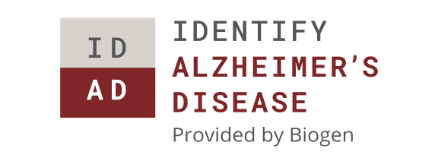Alzheimer’s disease (AD) is a growing global health challenge affecting those living with the disease and their families.3,4
According to the World Health Organization (WHO), tens of millions of people worldwide live with AD, and this number will grow in the years ahead, outpacing the health and social care resources needed to manage it. Someone in the world develops AD or another form of dementia every three seconds.4 AD and other forms of dementia are now among the top 10 causes of death worldwide, ranking 3rd in both the Americas and Europe in 2019.5,6
The number of people affected by Alzheimer's disease (AD) is expected to rise along with the rises in ageing populations and life expectancies. AD is regarded as one of the costliest diseases to society.10
In Europe, the number of AD patients is expected to increase to 14 million by 2030, accompanied by an increase in the economic and societal burden. By 2030, AD and dementia are expected to collectively cost Europe €250 billion. That’s as much as the entire GDP of Finland.8 Global AD costs were estimated at almost around $1 trillion in 2015.9 These costs seem to be driven mostly by social care, and informal care costs due to loss of productivity by both patients and caregivers:
In Europe, the number of AD patients is expected to increase to 14 million by 2030, accompanied by an increase in the economic and societal burden. By 2030, AD and dementia are expected to collectively cost Europe €250 billion. That’s as much as the entire GDP of Finland.8 Global AD costs were estimated at almost around $1 trillion in 2015.9 These costs seem to be driven mostly by social care, and informal care costs due to loss of productivity by both patients and caregivers:
16% of the vast financial costs of AD are attributed to medical costs (e.g., medical practitioner visits, hospital care, medical treatment/medications, etc.)10
41.7% are attributed to indirect/informal costs, in the form of unpaid work of informal caregivers (e.g., family members), which could mean loss of productivity as well as a reduction in financial savings.10
42.3% are attributed to social/non-medical costs (such as community and social services, private and public funding care, homecare, special accommodations, pension income, welfare support, and household expenses).10
The global burden of Alzheimer’s disease
Medical
costs
Indirect
costs
Social
costs
Adapted from Gustavsson A, et al. 202010
The burden that AD poses on healthcare and social care systems, as well as the burden on the individual patients and their caregivers is significant.10 Therefore, policy leadership, commitment and action is needed to address AD in order to optimise quality of care and support for patients, their caregivers, and their families.
WHAT’S NEXT
Addressing Alzheimer’s disease in Europe
A timely detection and accurate diagnosis of Alzheimer's disease can reduce the burden on society and healthcare systems.
